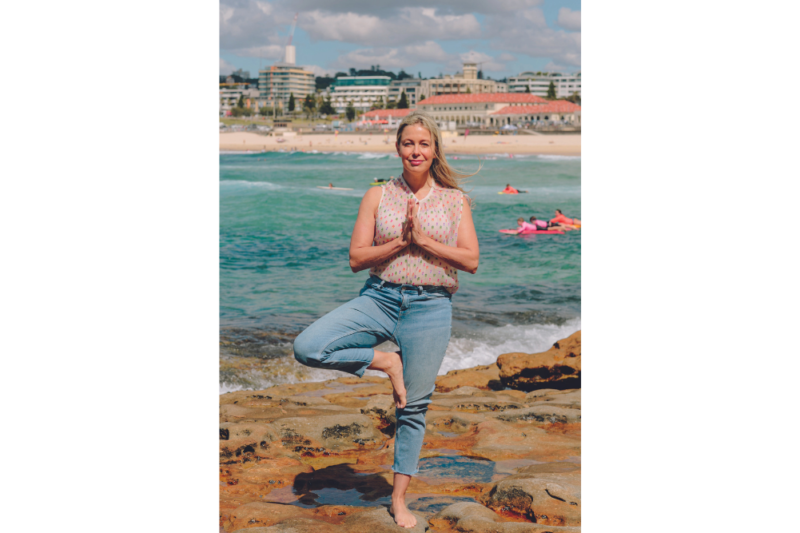Yoga for staying calm
Embrace the present moment & stay present in the storm. Acceptance fosters wellbeing & mindfulness. Here are 6 Yoga tools to help you stay present!
If there’s anything we have learned from the past few years, it’s that life is going to continue to provide us with challenges. Just when we think the storm has passed and we are ready to sail in optimal conditions, the weather seems to turn and keep us on our toes. The relentlessness of the continually changing weather and stormy skies can be overwhelming and exhausting. It’s understandable why we begin to check out, close our eyes and just want to wake up when it’s all over. This approach can offer us short-term peace by escaping the discomfort of what is. However, in the longer run, there are benefits in staying completely present in the storm as we learn acceptance and embrace the opportunity to grow from every experience.
The power of atha
The first word of Patanjali’s Yoga Sutras is “atha” or now. It is an auspicious word, with some teachers suggesting that if you really understood what atha means, you would understand everything and reach a state of yoga or liberation. Practising mindfulness, which Jon Kabat Zinn defines as “paying attention, on purpose, in the present moment, non-judgementally”, is the key to staying in the “now”, no matter what is going on. The non-judgement part can be particularly tricky to practise. Seeing our experiences as they are, without putting any kind of lens on them, framing them as good or bad, allows us to foster more acceptance in our lives.
The power of acceptance
“Accept, then act. Whatever the present moment contains, accept it as if you had chosen it. Always work with it, not against it.” ~ Eckhart Tolle
Acceptance of all our experiences, regardless of how stormy or calm they are, has been shown to positively affect our overall wellbeing. In one particular study, individuals who accepted rather than judged their mental experiences appeared to attain better psychological health, and less reactivity to stressors. Other studies suggested acceptance reduced feelings of shame, guilt, anxiety and distress. Acceptance allows us to get on with the task at hand, and do what we need to do, instead of putting energy into worry and fear. As my teacher David Life used to say, “So what, now what?”
Escaping the storm
Most of us are constantly trying to avoid our current experience. We walk into a room that is too cold, and we turn the heat on; when it gets too warm, we open the windows and take our coat off, forever trying to escape whatever discomfort we feel. Inevitably, though, at some point we will be thrust into a situation where we can no longer control the temperature or the weather, and there is no escape. As the storm rages, without any skills to keep us awake, to simply be in the experience, we struggle to stay afloat. All manner of addictions arise from this moment, of grasping and craving, clinging to something that helps us evade the reality of the battering of our boats in the tempest.
How to stay present
The yoga practice provides us with many tools to help us stay present and observe whatever is arising.
- The asana shows us how to dive into poses and stay steady regardless of discomfort and strong sensation. It allows us to practise breathing calmly and being steady, staying in a posture, when we’d really prefer to run.
- Concentration on the breath, in pranayama practices, is very powerful at quietening the mind and bringing us directly into the present. It also teaches us the transient nature of our experience, how it is ever-moving, in motion, traversing the cycles of beginning, middle and end, over and over.
- We learn through pranayama, watching, controlling and freeing the breath about the changing nature of things at a very primal, cellular level. And it shows us how every new breath is a chance to start again, that the newness, the freshness of each inhale and exhale is a different experience. Whatever storms we are in will pass at some point, giving way to something new.
- Meditation shows us how our thoughts come and go, jumping around and as changeable as the weather. Being reminded of the physical and mental layers that this too shall pass, for better or worse, is a great way to practically work with stepping into the present, accepting what is and trusting it will pass eventually.
- Drishti, or a focus point, is another tool we can use to train the mind to concentrate. It is through concentration, or dharana, we place the mind at one thing at a time, which allows us to be present and available to see what’s in front of us.
Non-attachment
In the Yoga Sutra 1.2, “Yogash [union] citta [mind] vritti [whirlings] nirodha [to cease/get rid of]” is sometimes translated as “Yoga is when the mind stops.” But in that case, the party is over. When our minds stop, we don’t get to experience anything, let alone yoga. My teacher Manorama D’Alvia speaks to it from the perspective of not attaching to the rotational movements of the mind, or the vrittis. If nirodha is to stop or cease, and we think of citta as the ocean of the mind with the vrittis as the waves or thought patterns, yoga is when we stop attaching the chaos of the surf. We identify less with the individual waves, and see that we are the ocean, vast and deep. Then no matter what storm is raging, we are always connected to that deeper oceanic part of ourselves, which isn’t so affected by the individual movements and tides; after all, the weather changes, but the ocean is always there, seemingly limitless and rich.
Pratyahara
Because the nature of the world is designed to steal our attention, our energy constantly moves outwards through the senses. As we practise withdrawal of the senses, pulling them back inwards towards us in times of crisis and challenge, we preserve our energy which will be required to take skilful action in whatever stormy situation we are in. We cannot steer the boat across immense waves if we are not paying attention, concentrating, making intelligent choices, and have the energy to do so. Using our practice to harness our ability to draw the senses inwards will make it easier in those moments that feel tougher to do so, when the lightning and thunder feel overpowering. As D’Alvia says, you don’t need to practise every day, but there will come a time when you will be grateful you practised every day. The more we practise when the skies are calm, the more we will be prepared and ready when we need a yogic mind in those turbulent times.
What being present does for us
When we pay attention to what is happening in front of us, with acceptance, a calm mind, free from judgement, we see things as they really are. Instead of operating from a place of fear, or projecting into the past or future, we wipe the lenses clean and can see clearly — not from
a place of denial or overwhelm, rather the stance of a warrior on the battlefield, like Arjuna in the Bhagavadgita. Just as he had to accept his role in fighting a battle he didn’t want, we may find ourselves in blustery conditions we don’t want to be part of. When we have a yogic mind, we can face those moments; we can do what must be done with a clear mind and steady hand.
Turbulent times as a teacher
The greatest gift of all, however, from staying with eyes wide open in the tempest, is that we can use the experience as a teacher. Moments of great joy are bolstering and fortify our spirit. But the obstacles and storms of life are where the greatest learning is. Use those moments as a teacher and no experience shall go to waste; rather they will enhance our life, showing where we are stuck, where we need to grow and how much further we can travel in terms of kindness, compassion and empathy for self and others.
Chaos to calm yoga practice
This practice is designed to foster presence through some of the tools suggested above, as well as some balancing poses which require our steadiness, drishti and concentration.
Pratyahara
Choose a comfortable seat and listen to the sounds around you. Start to pull your senses inwards. Close the eyes. Relax the jaw and let the tongue drop away from the palate. Observe any taste on your tongue. Take in the smells around you. Feel what sensations you can especially on the hands and fingers. Listen to the sounds around you. Keep your awareness on the senses in this way, not letting them move out, gathering stimulation
or escaping this present moment.
Meditation
Keep sitting. Notice any thoughts that start to arise. Let them bubble up, feel them, experience them, accept them and let them move on. Keep noticing your senses, physical sensations, taste, the dark behind the eyelids, the sounds, the smells. As you do, keep allowing thoughts and feelings to come up, accepting them and letting them go. Stay aware, completely in the present moment.
Tree pose

Stand with feet hip-width apart. Bend the right knee and lift the right thigh parallel to the earth. Externally rotate the right thigh bone out and around and place the foot in the left inner thigh. Keep pelvis in neutral as you press foot into thigh, and the outer left hip hugs in to press left thigh back into the foot. Take five breaths. Swap to the other side.
Figure four standing balance

Stand with feet hip-width apart. Bend the right knee and lift the right thigh parallel to the earth. Externally rotate the right thigh bone out and around and place the right foot over the left knee. Bend the left knee as though you are chair pose and keep the spine long. Take five breaths. Swap to the other side.
Ardha chandrasana

Start with block outer edge of right foot, in a lunge position. Take the block out in front of you as you lift the back leg and open the left hip so that the left foot is in line with the hip and toes are flexed and pointing forward like a tadasana leg. Keep right hand on block under right shoulder, and left hand on hip or reach it up as you wrap right ribs under, left ribs on top.
As a mama, writer, Play School presenter and yoga teacher, Rachael Coopes loves storytelling and yoga philosophy. A certified 800-hour Jivamukti teacher with more than 1000 hours of training and a decade of teaching, she currently facilitates yoga teacher training programs at BodyMindLife. She is eternally grateful to all her teachers.
Photography TESSA TRAN







